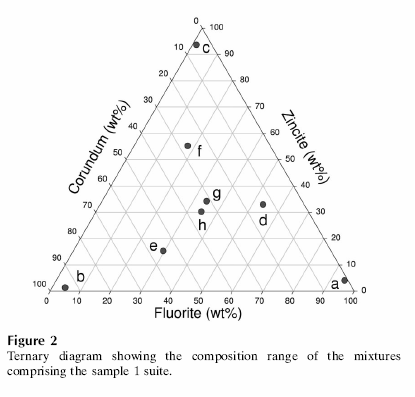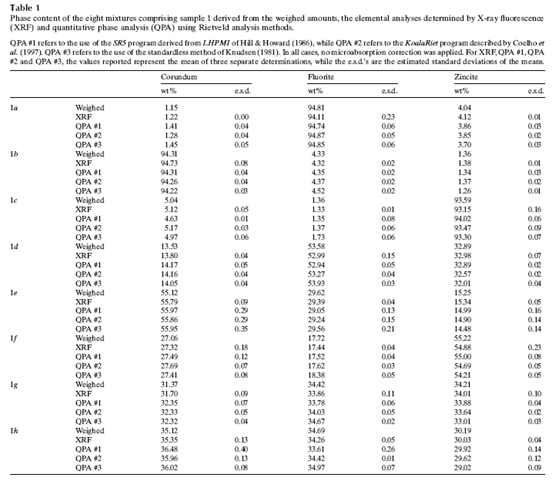Tutorial Quantriet
Quantititative Rietveld Refinement
Files needed: al2o3.cif; caf2.cif; zno.cif; cpd-1d.xy; round_robin_xy.zip
Learning Outcomes: This tutorial will introduce you to quantitative Rietveld refinement. This is a complex area with many pitfalls. Before doing this in anger you must read the specialist literature (e.g. Round Robin publications by Madsen/Scarlett or their chapter in Robert Dinnebier’s text). It uses data on an Al2O3/CaF2/ZnO mixture where microabsorption effects are minor and there is minimal preferred orientation. See J. Appl. Cryst., 2001, 34, 409-426.
Information: Data were “collected” on a diffractomer with Cu Ka1/2 radiation and a graphite monochromator. More details are available on line.
1. Download the data files and follow Durham menus to set up a 3 phase Rietveld refinement of data set cpd-1d.xy. Beware: the ZnO x/y parameters should be entered as:
x =2/3; y =1/3;2. After the “str” line of each phase enter lines which read:
phase_name zno
weight_percent perc_zno 0if they’re not already present.
3. Perform Rietveld refinement. You can probably get away with one peak shape for all phases, though you could try something more fancy. You should probably refine a single temperature factor for each phase.
4. The results reported in the paper are 14.16/53.2/32.57%. How do your results compare?
5. Read the paper to get all the details of things that might go wrong in Quantitative Rietveld refinement and details of all the mistakes other people made.
6. The file linked here is set up so that you can quickly refine all the different samples prepared for the Round Robin. It shows how you can quickly tabulate results from topas using the “out” commands. Coupling these ideas with the use of command line topas (tb) allows rapid and easy automation of Rietveld refinement. Compare your answers to those in the paper. Compositions are in the figures below which have been taken from the paper. Method qpa2 is the closest to the one you’re using here.


